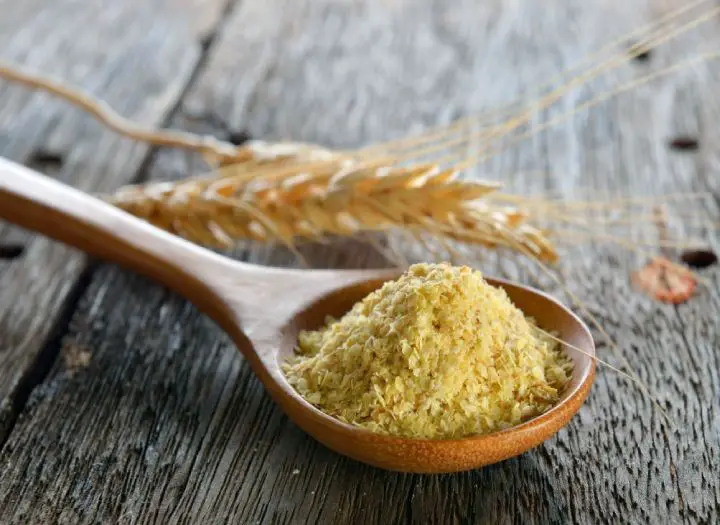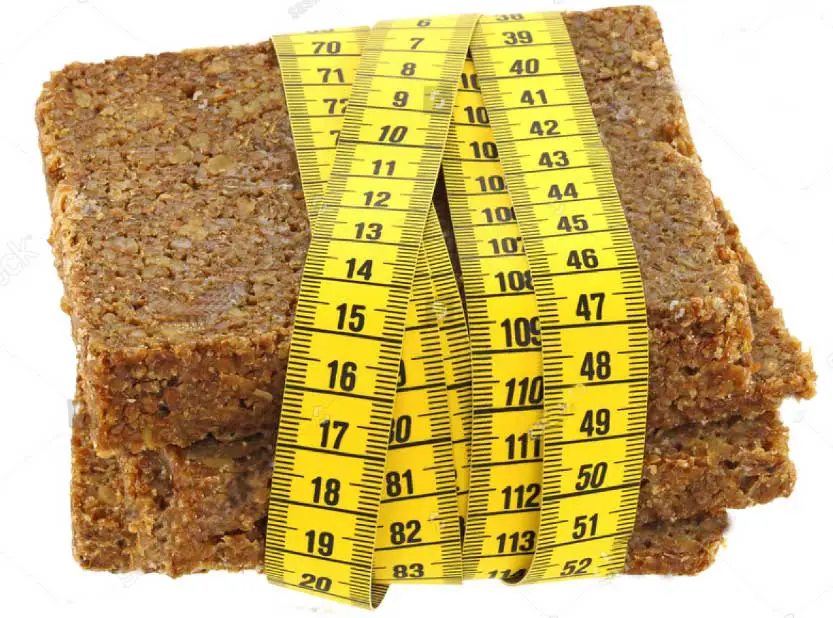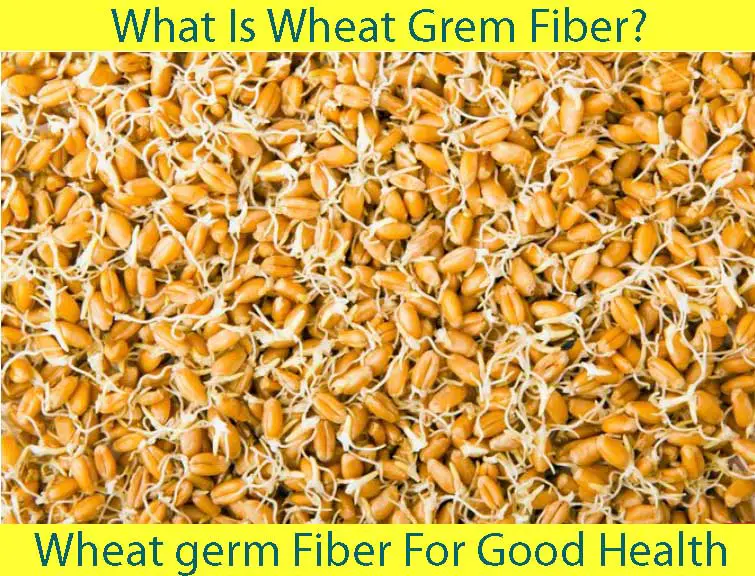I think you are seeking huge information about Wheat germ nutrition facts. I assurance you that you have came to the right place. In my total presentation you have came to know the wheat germ Chemical analysis, Sensory evaluation, Biological Evaluation and materials and method. In this Section I will describe details on Wheat germ Benefit, Wheat germ Nutritional Information, Wheat germ oil Nutrition and others factors of Wheat germ.
Wheat Germ Nutrition facts For Better Health
What is Wheat Germ?
The germ is the small part inside a kernel of wheat that germinates and grows. Its job is to nourish the growing grain, so the wheat germ is packed with nutrients. Basic Nutrition Wheat germ is is not usually eaten in large amounts, so this article uses nutrition information for a serving size that equals two tablespoons of natural, unprepared wheat germ. Even using such a small serving, wheat germ is an excellent source of many nutrients, including protein. It provides 6.5 grams, or 13 percent of the recommended daily value of protein. It also provides high-quality protein that includes all the essential amino acids. It also supplies 3.7 grams, or 15 percent of the daily value of dietary fiber. All this nutrition comes with only 101 calories, 4 percent of the daily value (DV) of fats, and 5 percent DV of carbohydrates.Wheat germ is the inner, nutritious part of the wheat kernel that is discarded during the production of flour. It has 414 calories per cup, according to Nutrition Data.com. It is very high in vitamins and minerals and is commonly used in baking recipes and cereals. It’s also high in fiber, containing 1 gram (g) per tablespoon, which makes it helpful in regulating bowel function.
Related Topic:
Wheat Germ Health Benefits
Wheat germ nutrition facts is a vital issue to research and know actual factor of wheat germ food elements. Here is how you will get all nutrition fact of wheat germ.
Carbohydrates
High in carbohydrates, wheat germ contains 60 g, or 20 percent of the recommended daily allowance (RDA). It has 15 g of fiber and contains no sugar.
Protein
Wheat germ is high in protein, containing 27 g (53 percent RDA), so vegetarians often eat it to make sure they get enough of this essential compound.
Fats
Wheat germ contains 11 g of fat (17 percent RDA), with 2 g of the total fat being saturated fat.
Vitamins
Wheat germ is a great source for most of the B vitamins, especially thiamin (35 percent DV), folate (20 percent DV), vitamin B6 (18 percent DV), and niacin (10 percent DV). Wheat germ has 8 percent of the daily value of riboflavin and 6 percent of pantothenic acid.
Wheat germ is high in vitamins. It contains 1.5 milligrams (75 percent RDA) of B6, 323 micrograms (81 percent RDA) of folate, 2.2 mg (144 percent RDA) of thiamin and 7.8 mg (39 percent RDA) of niacin.
Minerals
Manganese is plentiful in wheat germ, providing 186 percent DV of this mineral in a serving. Wheat germ also contains a great amount of most of the essential minerals, providing selenium (32 percent DV), phosphorus (24 percent DV), zinc (23 percent DV) and magnesium (17 percent DV). You’ll also obtain 11 percent of the daily value of copper, 10 of iron, 7 of potassium, and 1 percent of calcium. It doesn’t provide any sodium, which is important for those who are watching their salt consumption.Wheat germ is good source of beneficial minerals. It contains 44.9 g (4 percent RDA) of calcium, 7.2 mg (40 percent RDA) of iron, 272 mg (69 percent RDA) of magnesium, 968 mg (97 percent RDA) of phosphorus, 1026 mg (29 percent RDA) of potassium, 14.1 mg (94 percent RDA) of zinc, and 15.3 mg (765 percent RDA) of manganese.
Wheat germ nutritional benefits:
Even though wheat germ is available in the cereal aisle of most grocery stores, it’s not commonly found on the average shopping list. But this powerhouse of nutrition deserves your attention. Just one small serving of wheat germ provides a substantial amount of complete protein, vitamins and essential minerals.
Wheat Germ Nutritional Information
Wheat grain consists of endosperm, bran, and germ,which account for 81 to 84 %, 14 to 16%, and 2 to 3% of the grain, respectively. Raw wheat germ,containing as much as 10% oil, is mainly used in food, medical and cosmetic industries as a source of oil .Wheat germ is a by– product of the flour milling industry and has great potential as a highly nutritious food supplement. Wheat germ protein is reported to have a highnutritive value comparable to that of animal proteins.The germ provides three times as much protein, seven times as much fat and 15 times as much sugars and six times as much mineral content when compared to wheat flour.
Wheat Germ Materials and methods
Materials:Wheat germ (WG) and wheat flour (72% extraction) were obtained from Banha, mill company, Egypt. The other ingredients used to make the biscuits were purchased from local market at Kafr El-sheikh City, Egypt. Chemicals and bio-chemicals of analytical grade were purchased from Gomhoria Co. for Chemical and Drugs, Egypt.
Methods:
1. Preparation of Defatted Wheat Germ Flours (DWGF):
Wheat germ contains several enzymes, such as dipeptidase, proteinase, lipase, lipoxidase and phytase. In order to stabilize it, wheat germ was treated by heating for 20 min at 105oC and it was then defatted with n-hexane for 8 hrs, and air-dried at room temperature. The previous treatment was used to deactivate enzymes activity. The defatted wheat germ meal was milled using a laboratory scale hammer mill. The resulting flour (DWGF) was sieved through a 60-mesh screen and was kept in polyethylene bags and stored at 4oC until used.
2. Preparation of the Experimental Biscuits:
Method of Gaines and Tsen with some modifications by Alobo was used to prepare the biscuit samples. Blends containing 5, 10, 15, 20 and 25% of defatted wheat germ flours (DWGF)was used as replacement of wheat flour (72% extraction). The basic ingredients were 420g of flour blends, 130g corn oil, 200g sugar, 50g of whole egg, 5g of salt, 5g of vanilla, 15g of baking powder and water variable.The dry ingredients were thoroughly mixed in a bowl by hand for 3 min. Other ingredients were added and mixed in a rotary mixer (Moulinex model Depose type 171) for 5 min., using a wooden rolling pin. The dough was sheeted on a pastry board to uniform thickness of 7 mm and cut into circular shapes of 6 cm diameter using a circular scone cutter.The cut dough pieces were backed at 210oC for 12-15 min using preheated backing oven. After removal from the oven, biscuits were allowed to cool at room temperature for 2 hours and then divided into three lots; one lot was used immediately for the measurement of physical properties. The second was subjected to sensory evaluation and the third lot was used for chemical analysis and making of diet formulations for feeding the experimental rats.
3. Wheat Germ Nutritional Chemical Analysis:
Moisture, crude protein, fat, fiber and ash contents of wheat, wheat germ, defatted wheat germ flour and prepared biscuits samples were determined according to the method described in the A.O.A.C . Total carbohydrates were calculated by difference. The factors, n = 5.70 (for wheat flour, wheat germ and defatted wheat germ ), and n = 6.25 (for biscuits) were used for conversion of nitrogen to crude protein. Calcium, iron, magnesium,potassium, and zinc were estimated using atomic absorption according to the method of A.O.A.C. Phosphorus was determined according to the method of Perkins . Amino acids were estimated in the hydrolyzate using amino acid analyzer (Beckman amino acid analyzer, Model 119 CL) as described by Sadasivam and Manickam.
4. Physical Properties of Biscuits :
Five replicates for each sample were measured for weight, diameter and height (thickness). The method of Zoulias et al. (2002) was used for the measurement of biscuits diameter, where four units were placed next to each other and the total diameter was measured. Then all four units were rotated by 900 and the new diameter was measured. The average of the two measurements divided by four and was taken as the final diameter of biscuits. Spread ratio was expressed as diameter/height.
5. Wheat Germ Nutritional Sensory Evaluation:
Organoleptic evaluation of different prepared biscuits was performed by a semi-trained panel of twenty members using nine-point hedonic-scale ratings for color, taste, flavour, texture and overall acceptability with 9 being the highest score “extremely liked” and 1 being the lowest score “extremely disliked”. The mean of each characteristic scores was calculated.
6. Wheat Germ Nutritional Biological Evaluation:
Thirty weanling albino rats (26 days) of an average weight 42±2 gm were obtained from experimental house of Veterinary Medicine Faculty, Cairo Univ., Egypt. Animals were divided into five groups, each of them six rats males according to the following scheme: Group1: fed on Basel diet (Negative control) Group2: fed on wheat flour biscuit (Positive control) Group3: fed on biscuit containing 5% DWGF as replacement of wheat flour Group4: fed on biscuit containing 10% DWGF as replacement of wheat flour Group5: fed on biscuit containing 15% DWGF as replacement of wheat flour.
Wheat Germ Nutritional Natural Vs. Prepared
One prominent company sells prepared (toasted) wheat germ in jars in the cereal aisle. A comparison of prepared to natural wheat germ shows that the daily values for most nutrients differ by no more than 2 percent. The prepared wheat germ has a little more phosphorus, zinc and riboflavin (5 to 7 percent DV more) but it had significantly more folate (47 percent compared to 20 percent).
Wheat Germ Nutritional Uses
There are many different ways to work wheat germ into your normal diet. Toasted wheat germ adds great texture and flavor to vanilla yogurt. It can be sprinkled into soups and stews or added to salad dressings. You can mix it with hot cereal or toss it into cookie dough before baking. Depending on the recipe, you can also use it to replace a small amount of flour.
wheat Germ oil Health Benefits
Wheat germ oil Perform from the germ, or embryo, of the wheat seed and is high in vitamin E. It’s a ordinary element in nutritional supplements, baked goods and other Manufacturer foods. It’s also probable to use wheat germ oil as a cooking oil, although it has a highly-flavored and becomes rancid rapidly.
Serving Size
Wheat Germ nutritional information for pure wheat germ oil. The serving size is 1 tbsp. of oil weighing 14 g or about ½ oz. This nutritional information is for general wheat germ oil and not a specific brand.
Wheat Germ Calories
A serving of whole grain or grain bacteria oil contains 119 calorie consumption. All of these calorie consumption come from fat since whole grain or grain bacteria oil has no protein or carbohydrates. A serving of whole grain or grain bacteria oil has about 6 percent of the daily value, DV, for calorie consumption, assuming a diet of 2,000 calorie consumption per day.
Wheat Germ Fat.
A offering of whole grain or grain bacteria oil has 13.5 g of fat, such as 2.5 g of fats. This provides 21 % of the DV for complete fat and 13 % of the DV for fats. Wheat bacteria oil contains no trans fat or cholesterol.
Vitamins and Minerals
A providing of whole feed or feed viruses oil has 20.2 mg of complement E, which is 101 % of the DV for complement E. It also has 3.3 micrograms of complement K, or 4 % of the DV for complement K. Whole grain or grain viruses oil contains no other natural vitamins or nutritional value.
Fatty Acids
Wheat germ oil consists of 55 % Omega-6 body fat and 7 % Omega-3 body fat. Other significant body fat in wheat germ oil include 16 % palmitic acid and 14 % oleic acid. Additional body fat make up the remaining 8 % of the unhealthy acid total in wheat germ oil.
Rita C. Donnell (Jennifer) has spent the last 26 years studying and practicing nutrition science. She has used a larger part of this time in improving people’s livelihoods. She has done so by coming up with unquestionable ideas on how to tackle food problems in her community. Readmore



